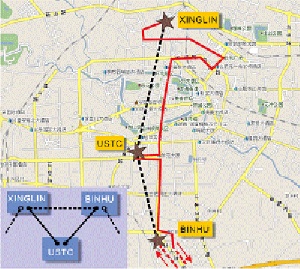May 7 2009
Safe quantum communication will be ready for daily use with the world's first optical quantum cryptography network completed in east China's Anhui Province recently. The American journal Science reported about the result, which was published in the latest issue of Optic Express in April.

Led by Pan Jianwei, researchers with the University of Science and Technology of China developed an operational network communication system, which allows real-time voice telephone among three users, or a broadcast from one user to the other two users by using one-time pad encryption.
The chained network topology allows secret keys to be forwarded, in a hop-by-hop fashion, along QKD links. Therefore unconditional authentication and encryption for information transmission by using one-time pad is possible. The middle node acts as trusted relays and increases the key generation rate to a higher degree, said researchers.
Quantum communication, a cross subject of quantum mechanics and classic communication, plays an important part in national security and financial information security, etc, and has high potential for application in other fields.
Scientists home and abroad have been devoted to the research since 1990s. However, quantum communication system remains experimental due to imperfection of lab equipments and lack of true single photon sources.
Recent revolutionary progress has been achieved by introducing the idea of decoy state, and by turning the idea into systematical and rigorous theory and scheme. By using decoy state within the common setup, one can obtain much higher key generation rates and longer distances (typically from less than 30 km, to more than 100 km), in the same level compared with the case of using true single photon sources. This leads to the ?rst successful demonstration by Lo's group from Canada for 15 km, and later for 60km. Recent research by Pan's group has extended the distance to 200km.